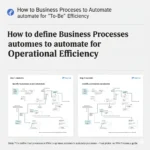The modern professional often finds themselves on the road, flying to client meetings, attending conferences, or overseeing remote projects. When you travel for work, your company doesn’t just send you off with a handshake; they provide a traveling allowance.
But what exactly is a traveling allowance, and why is its structure so critical for both the employee and the business?
This comprehensive guide breaks down the allowance, its types, and the essential IRS rules that keep your reimbursements tax-free.
What is a Traveling Allowance for Employees?
A traveling allowance is money provided by an employer to an individual (most often an employee) to cover the costs associated with business-related travel. The core idea is simple: you should not have to pay out-of-pocket for expenses incurred while performing duties for your employer.
This allowance is typically given in addition to your base salary. It is intended to cover expenses incurred while you are away from home overnight for business purposes a key IRS definition that separates it from standard, non-deductible commuting costs.
The three primary categories of expense covered are:
- Lodging: Hotel stays or other overnight accommodations.
- Meals & Incidentals (M&IE): The cost of food, beverages, and minor expenses like laundry, tips, and personal telephone calls.
- Transportation: Flights, train tickets, rental cars, and using a personal vehicle for business miles.
The Most Critical Rule: The IRS Accountable Plan
Understanding the tax implications is the most valuable knowledge for both the employer and the employee. If the travel allowance is handled incorrectly, the money intended to cover business costs can be treated as taxable income for the employee.
To avoid this, a business must operate an Accountable Plan for its reimbursements. This plan is the bedrock of tax-free allowances and must meet three crucial IRS requirements:
Business Connection
The expense must have a direct and clear business purpose. It must be ordinary and necessary for conducting the trade or business. Simply put: the trip must be a requirement of the job.
Adequate Substantiation
The employee must adequately account for the expense within a reasonable period. This includes providing proof (receipts, logs) for the:
- Amount of the expense.
- Time and place of the travel or expenditure.
- Business purpose of the expense or trip.
Return of Excess
The plan must require the employee to return any advance or allowance that is greater than the substantiated expenses (the money they didn’t actually spend) to the employer within a reasonable time frame.
Tax Alert: If your company’s policy fails even one of these three tests, the entire amount paid to you may be considered a non-accountable plan payment. This means the full allowance is added to your wages, reported on your Form W-2, and subjected to income tax and payroll taxes.
Methods for Providing a Traveling Allowance
Businesses can choose from several methods to provide the travel allowance. The choice often depends on the type of expense and the administrative effort involved.
Expense Reimbursement (Actual Expenses)
This is the most straightforward but most administratively heavy method. The employee pays for all expenses upfront, gathers all receipts, and submits a detailed report upon return. The employer then reimburses the employee for the actual cost.
- Best for: Large, non-recurring expenses like airfare and major conference fees.
Per Diem Allowance (Standard Rate)
The Per Diem method is an administrative convenience that removes the need for employees to track every single receipt for meals, lodging, or both. It is particularly relevant for the travel allowance of Government employees and is widely adopted by the private sector.
Per diem is a fixed, daily amount that varies by location and year.
- Government per diem rates 2025 (GSA): For travel occurring during Fiscal Year 2025 (beginning October 1, 2024), the standard rate for most of the Continental U.S. (CONUS Standard) is:
- Lodging: $110 per day.
- Meals & Incidental Expenses (M&IE): $68 per day.
- Total Standard Per Diem: $178 per day.
For non-standard areas (NSAs), such as high-cost cities like New York or San Francisco, the rates are significantly higher. Employees using the per diem method must still substantiate the time, place, and business purpose of the trip, but generally do not need receipts for the meal or lodging amounts, provided the employer’s payment does not exceed the published federal rate.
Mileage Allowance (For Personal Vehicle Use)
When an employee uses their own car for business travel, the company provides a non-taxable mileage allowance based on a rate set by the IRS. This rate is intended to cover the total cost of operating the vehicle, including gas, insurance, maintenance, and depreciation.
- IRS Standard Mileage Rate (Effective January 1, 2025): The rate for business use of a vehicle is 70 cents per mile.
- Requirement: The employee must maintain an accurate log of the date, starting/ending odometer readings, business purpose, and destination for all recorded miles.
Travel Allowance Policy: Best Practices for Businesses
A clear travel allowance policy is vital for compliance and employee satisfaction.
- Define Tax Home: Clearly state that the allowance applies only when employees travel away from their tax home (their main business location) overnight.
- Specify Allowed Rates: State whether the company will use actual expenses (receipts required) or per diem rates (GSA/IRS rates).
- Set Clear Timelines: Enforce a strict timeline for submitting expense reports and returning excess advances (e.g., within 30 days of trip completion).
- Address the What is travel allowance in salary Question: Reassure employees that funds paid under an accountable plan are not part of their taxable wages or salary, but are an essential reimbursement of costs.
By structuring a comprehensive and compliant policy based on the Travelling Allowance Rules, a business can confidently send its employees across the country, knowing their travel finances are efficient, deductible, and tax-free.
Essential FAQs About Traveling Allowance
Are all travel allowances tax-free?
No. For the allowance to be non-taxable for the employee, it must be paid under an IRS Accountable Plan, which requires substantiation (proof) of the expenses and the return of any unused advance money. If a flat, non-accountable stipend is given, it is treated as taxable wages.
Can I use the per diem rate for my lodging and still submit meal receipts?
Your company’s specific Travel allowance policy dictates this. Many companies use the per diem rate for Meals & Incidentals (M&IE) only, and require receipts for actual lodging costs, as lodging expenses can vary widely even within the same per diem area. Consult your employee handbook.
Does the travel allowance for Government employees 2024 or 2025 apply to private businesses?
The per diem rates published by the General Services Administration (GSA) are set for federal employees (Travel allowance of Government employees), but private businesses widely use them. Using the official GSA/IRS rates for reimbursement ensures the amounts are automatically deemed substantiated (reasonable) and are non-taxable, simplifying tax compliance.
What counts as my tax home for determining if I’m traveling away from home?
Your tax home is generally your regular or principal place of business, job, or post of duty, regardless of where your family’s personal residence is. You are only considered traveling away from home if you are required to be away from this primary work area for substantially longer than an ordinary day’s work and need to sleep or rest to meet the demands of your work.
If my per diem is more than I spent on a particular day, do I have to return the difference?
Under the per diem method, if your payment is at or below the federal GSA rate, you are generally not required to return the excess for that day. The IRS views the fixed daily amount as the substantiated expense. This is a key advantage of using the per diem method for budgeting and administration.




